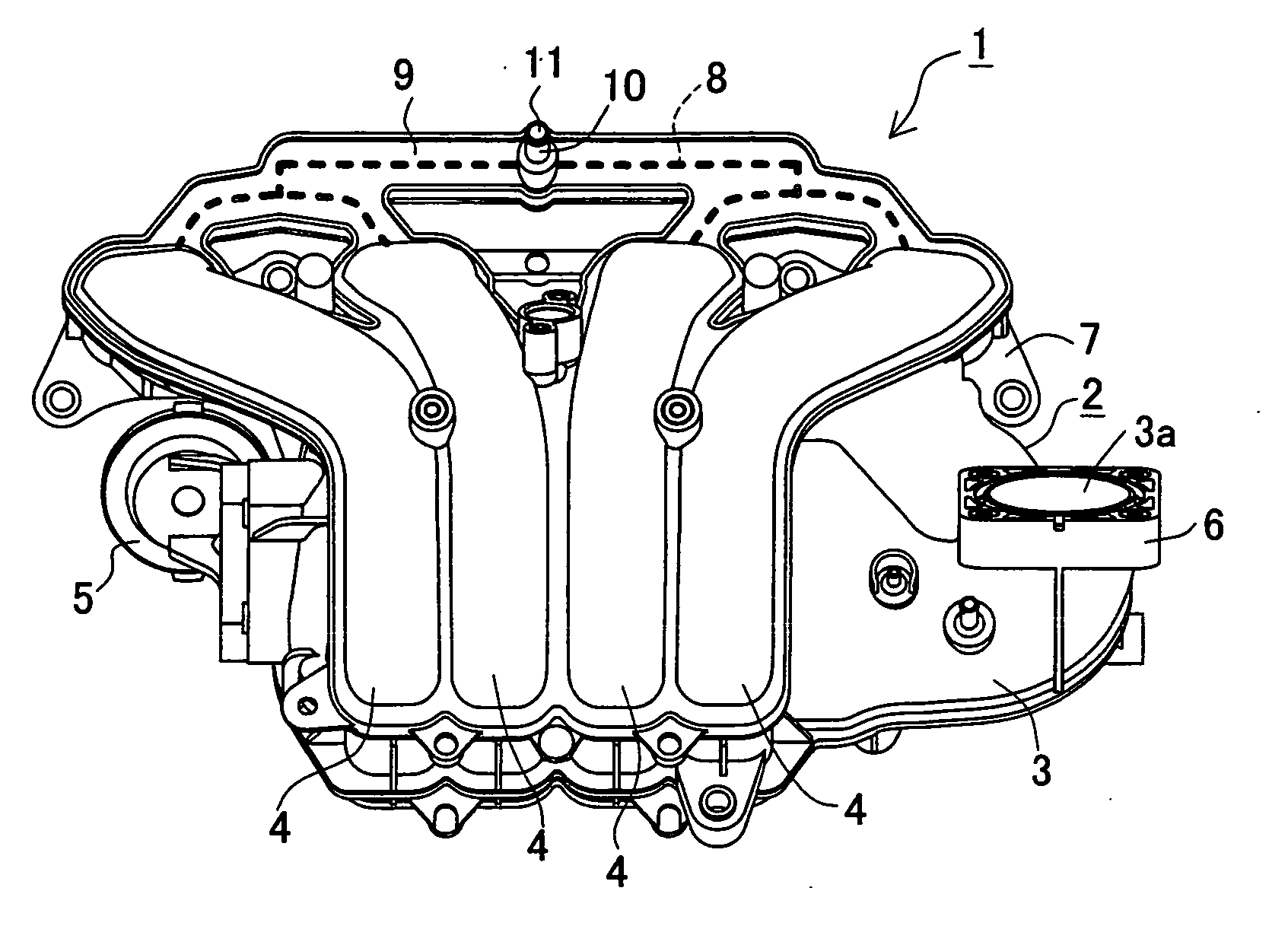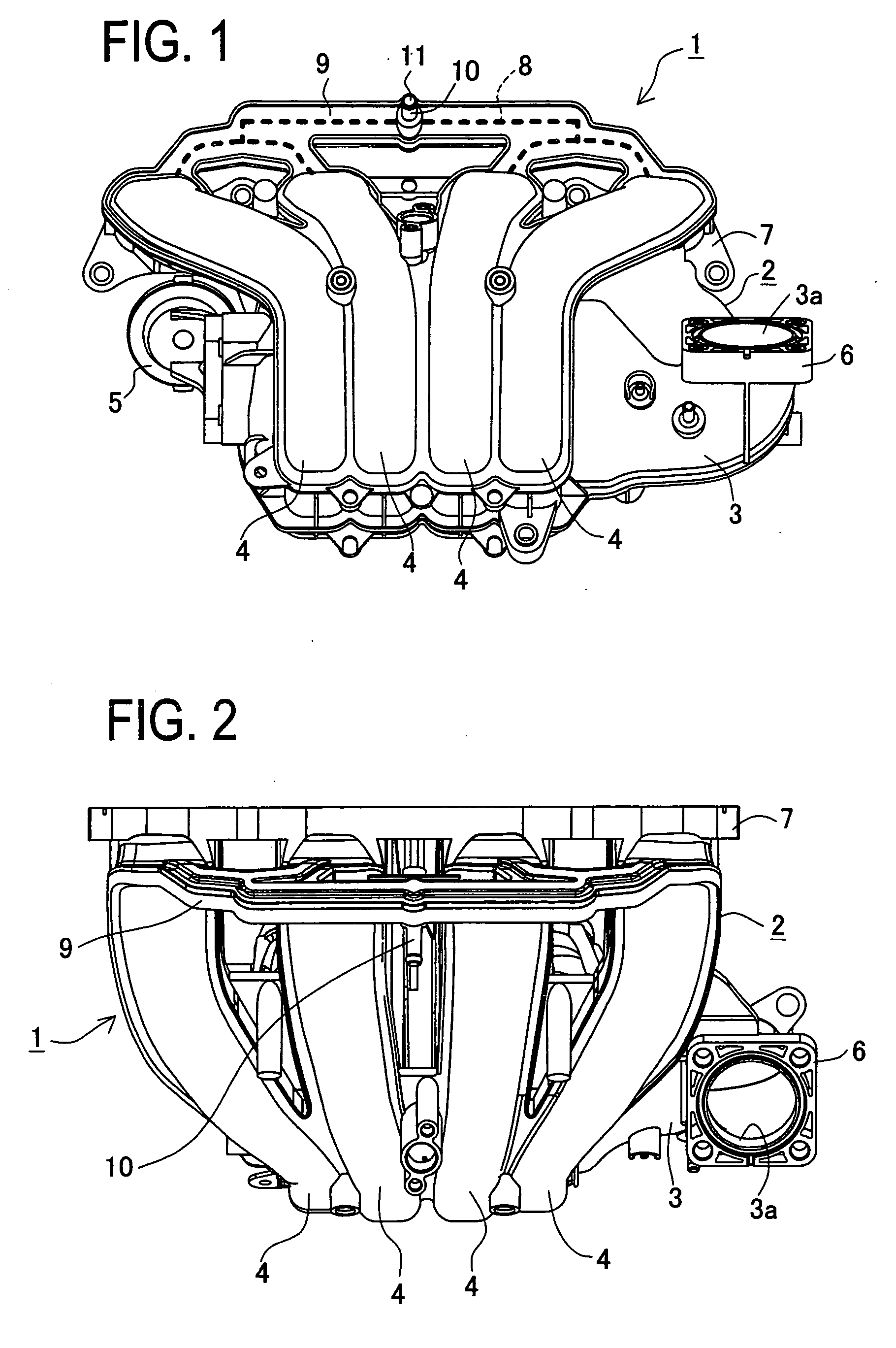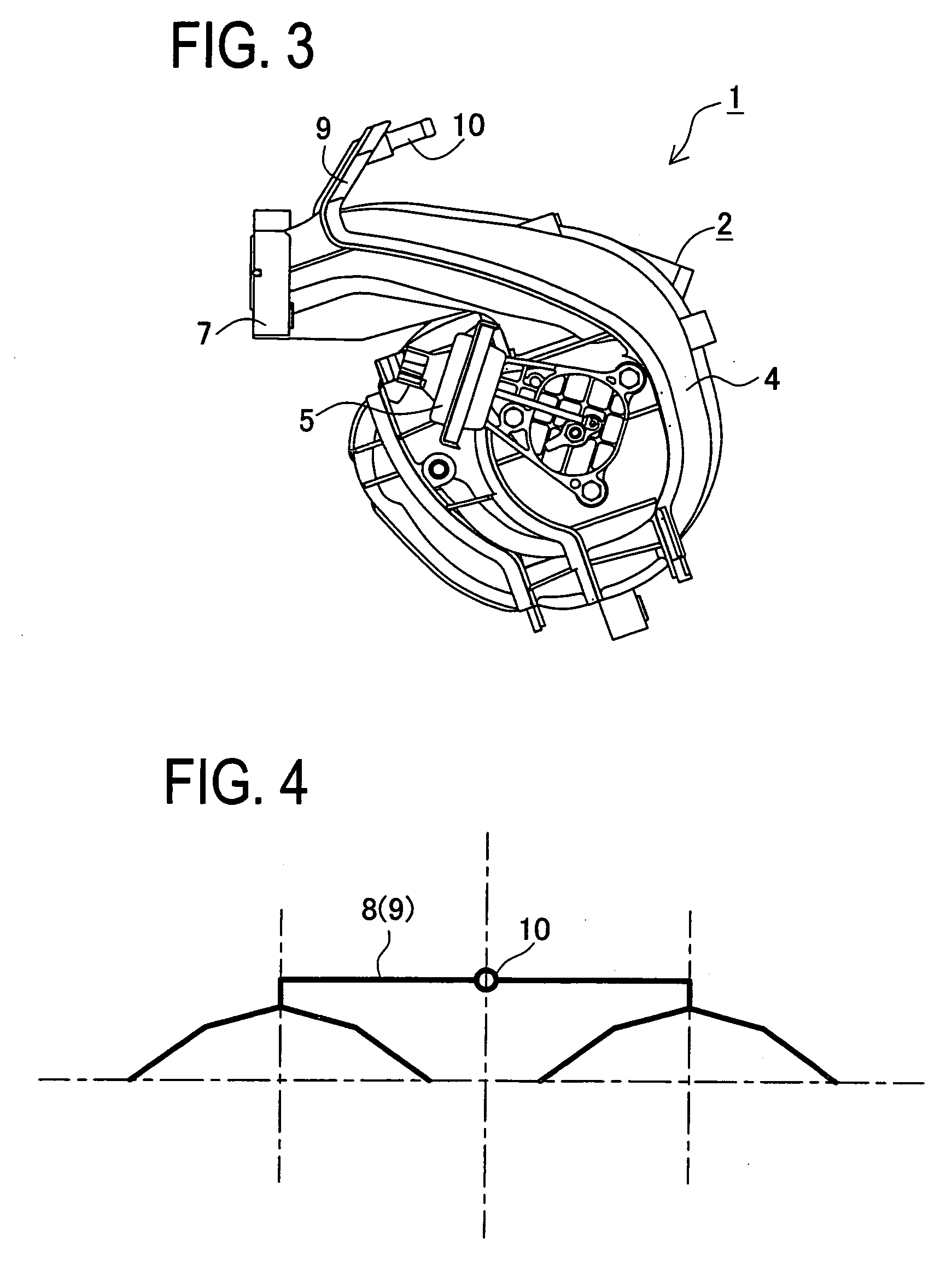Intake manifold
- Summary
- Abstract
- Description
- Claims
- Application Information
AI Technical Summary
Benefits of technology
Problems solved by technology
Method used
Image
Examples
Embodiment Construction
[0032] A detailed description of a preferred embodiment of an intake manifold embodying the present invention will now be given referring to the accompanying drawings.
[0033]FIG. 1 shows a front view of an intake manifold 1 in the present embodiment. FIG. 2 shows a plan view of the intake manifold 1 and FIG. 3 shows a left side view of same.
[0034] This intake manifold 1 is to be mounted in an engine to deliver air into a plurality of cylinders of the engine. The intake manifold 1 includes a manifold main body 2 (hereinafter, simply referred to as a “main body”) made of resin. This main body 2 is provided with a collecting pipe 3 connected to an air cleaner and the like and a plurality of branch pipes 4 branched from the collecting pipe 3. In the present embodiment, the intake manifold 1 includes four branch pipes 4 so as to be used for a four-cylinder engine. The intake manifold 1 is internally provided with a variable intake valve (not shown). A diaphragm-type actuator 5 is mounte...
PUM
| Property | Measurement | Unit |
|---|---|---|
| Pressure | aaaaa | aaaaa |
Abstract
Description
Claims
Application Information
 Login to View More
Login to View More - R&D
- Intellectual Property
- Life Sciences
- Materials
- Tech Scout
- Unparalleled Data Quality
- Higher Quality Content
- 60% Fewer Hallucinations
Browse by: Latest US Patents, China's latest patents, Technical Efficacy Thesaurus, Application Domain, Technology Topic, Popular Technical Reports.
© 2025 PatSnap. All rights reserved.Legal|Privacy policy|Modern Slavery Act Transparency Statement|Sitemap|About US| Contact US: help@patsnap.com



